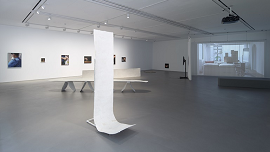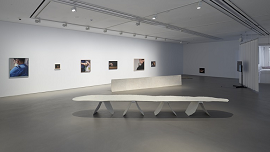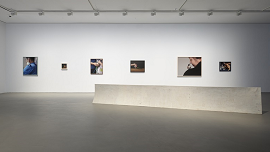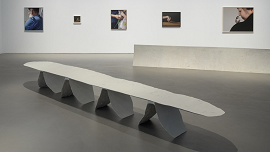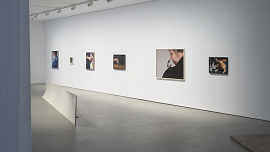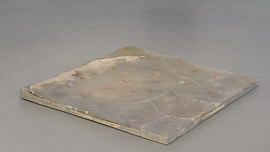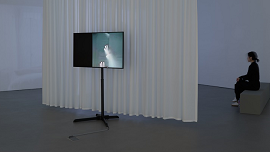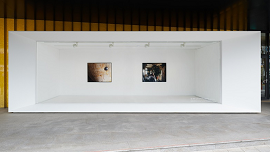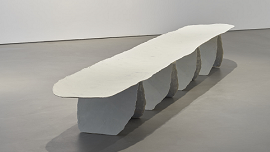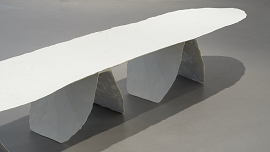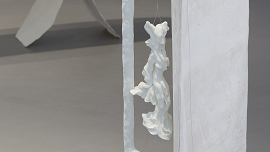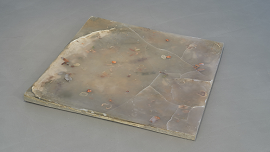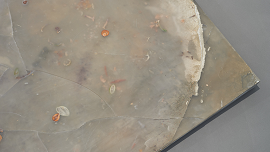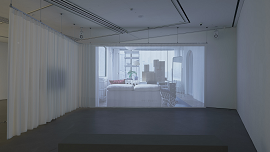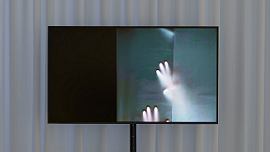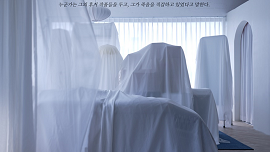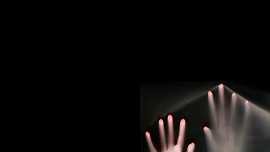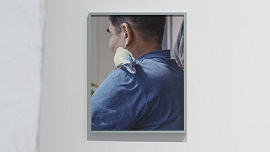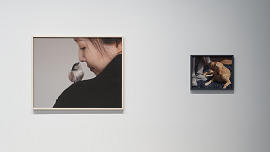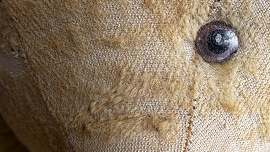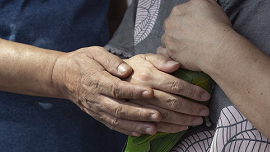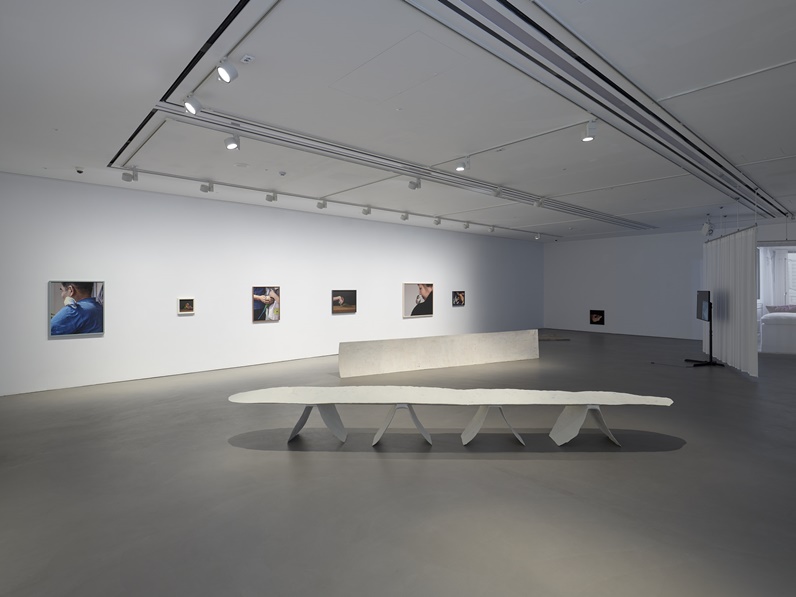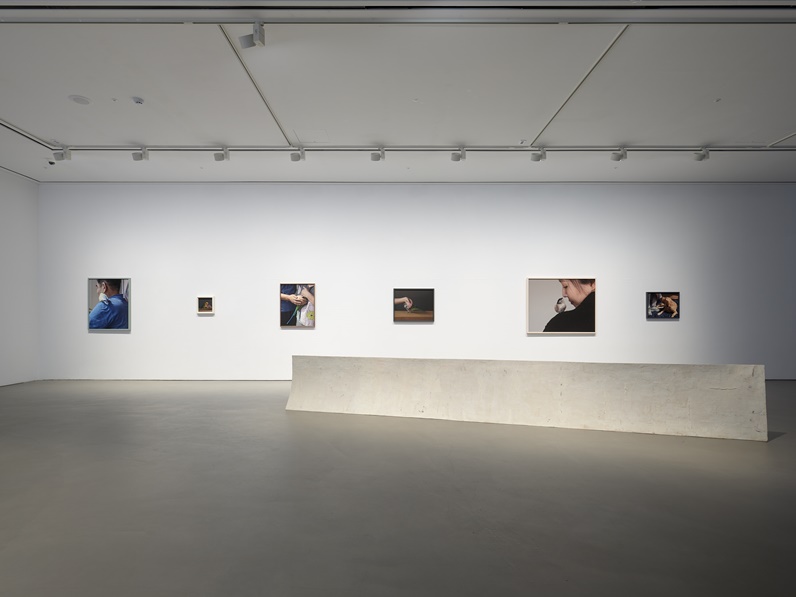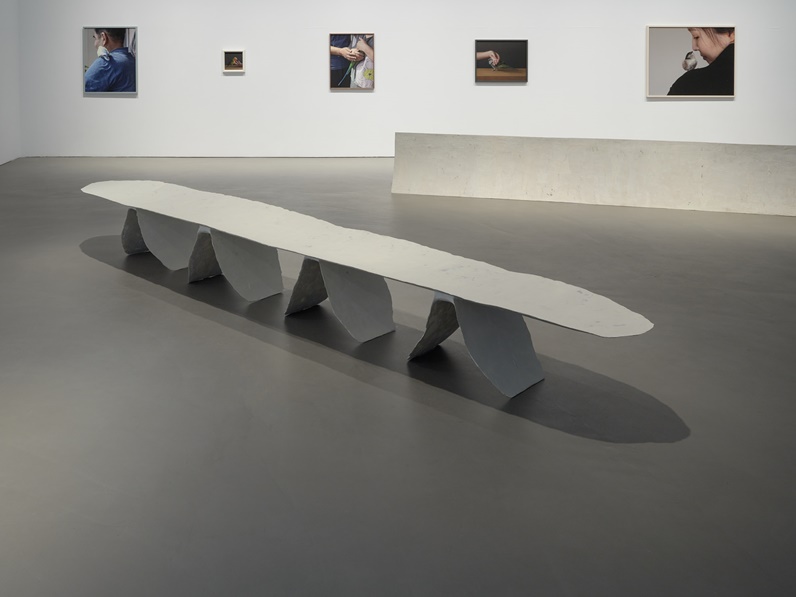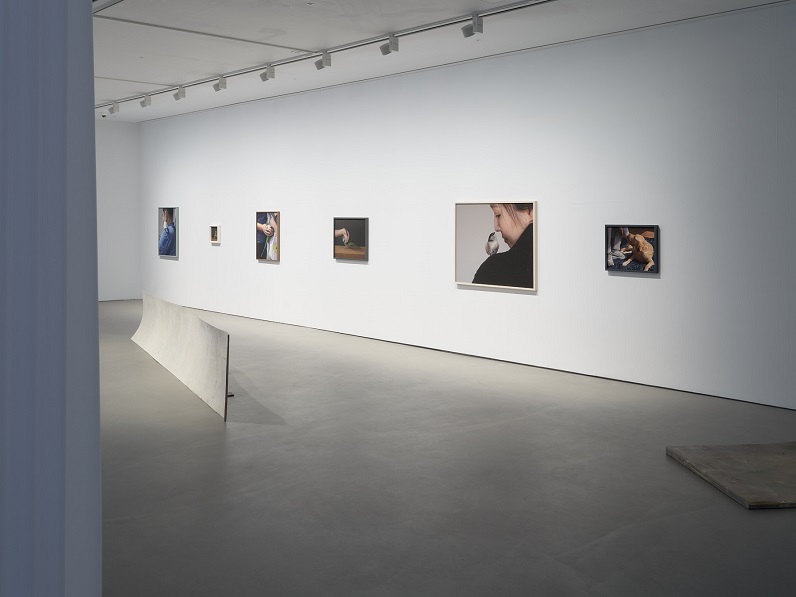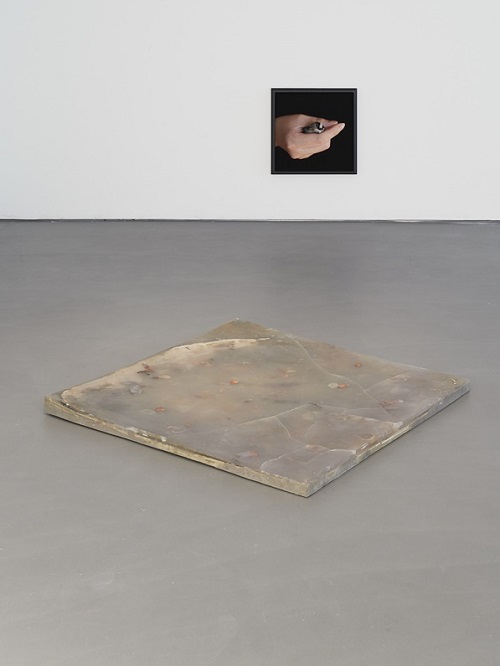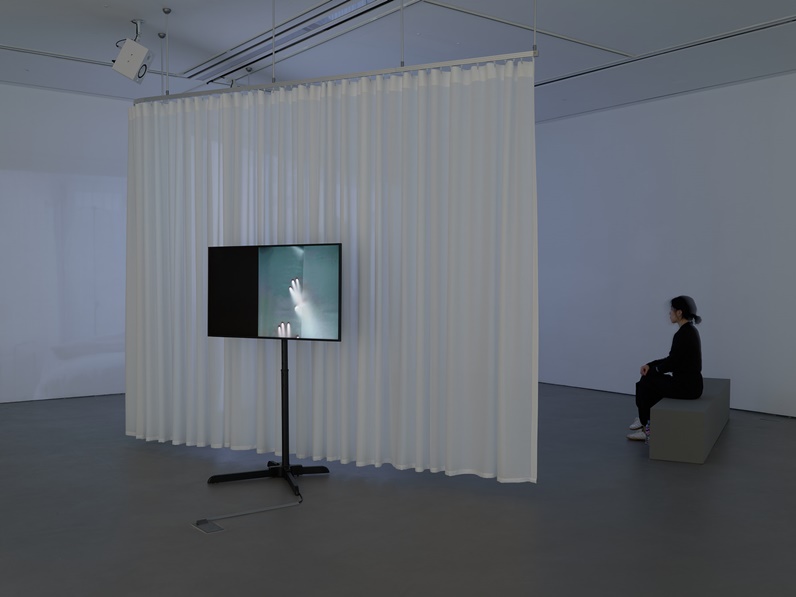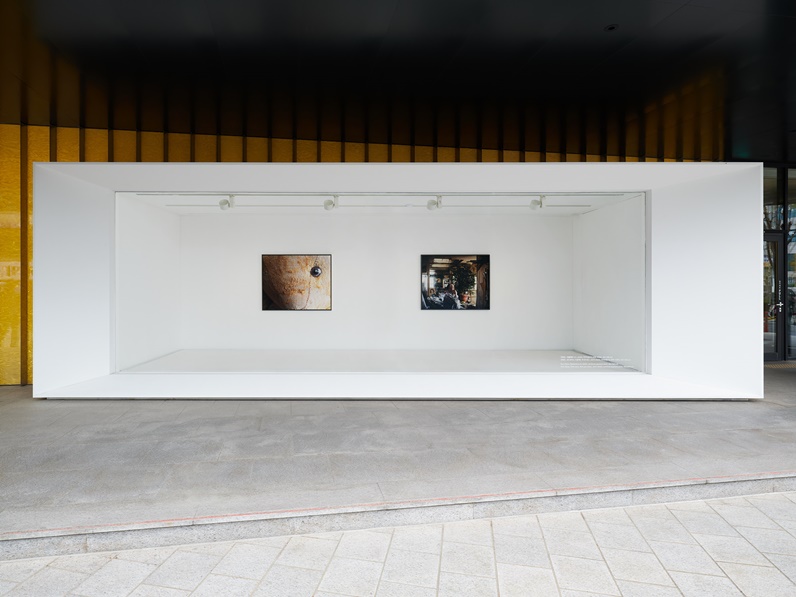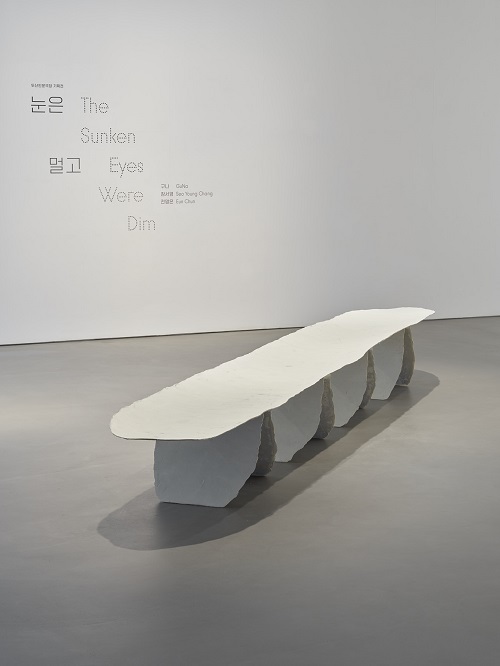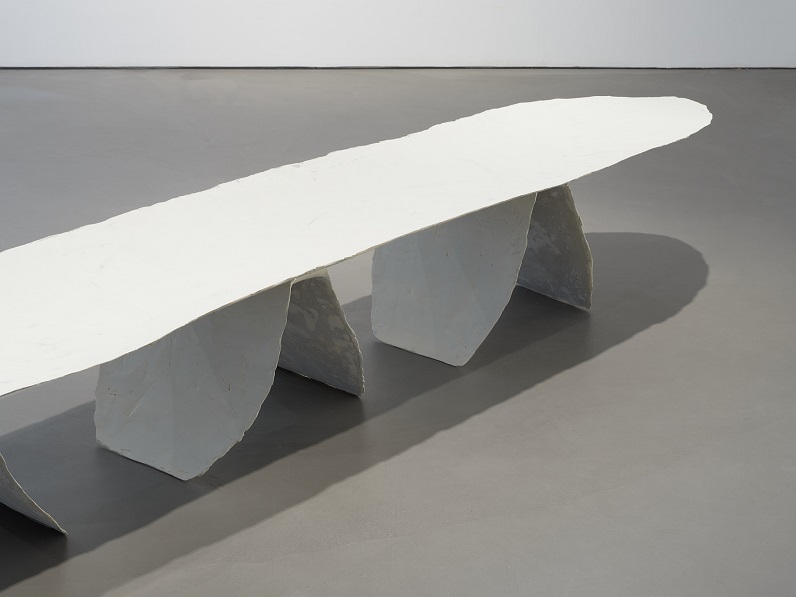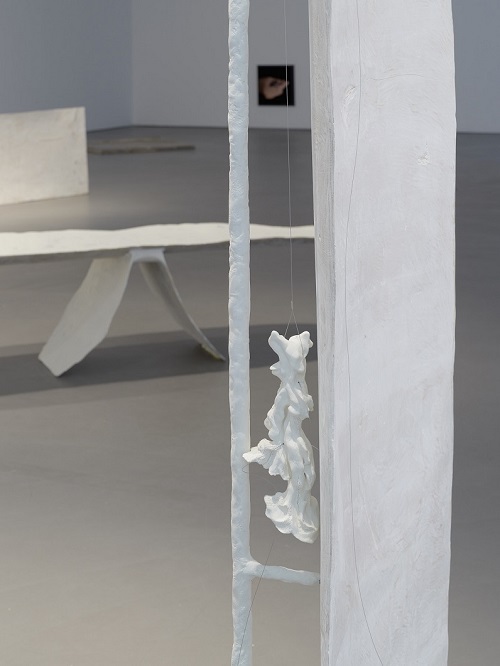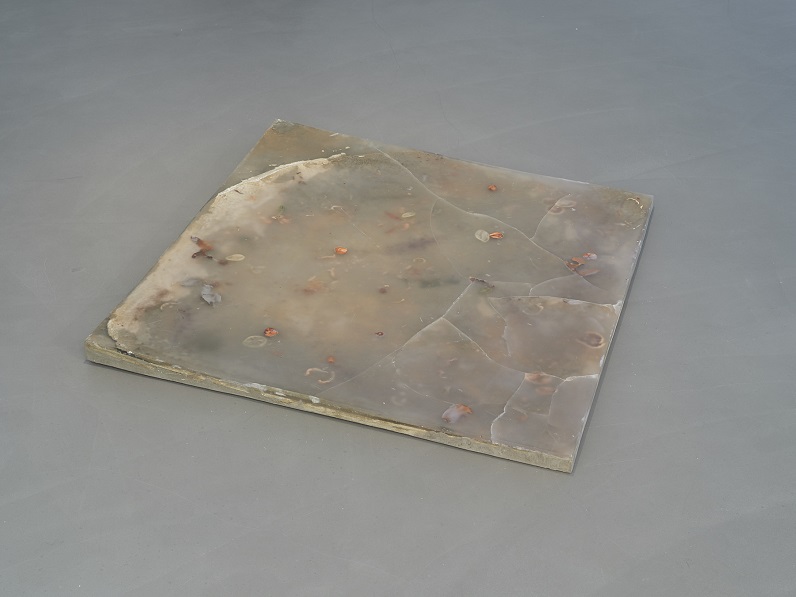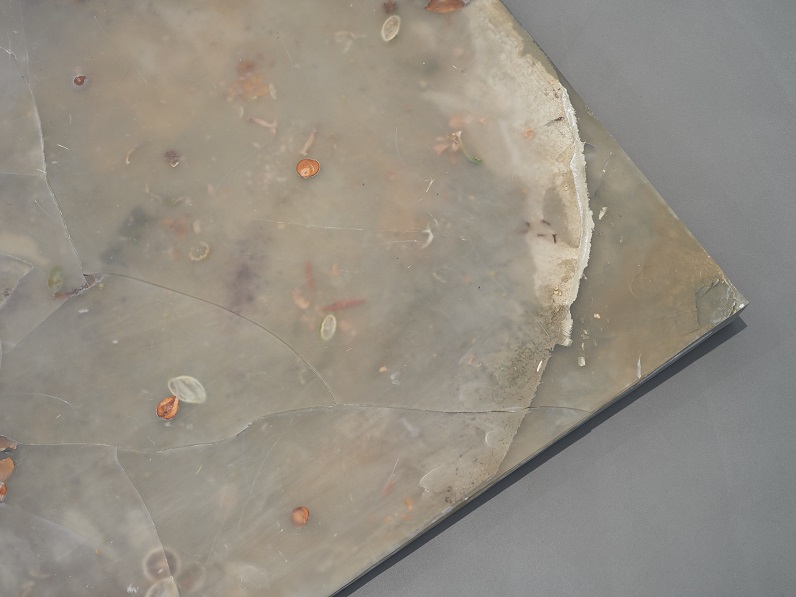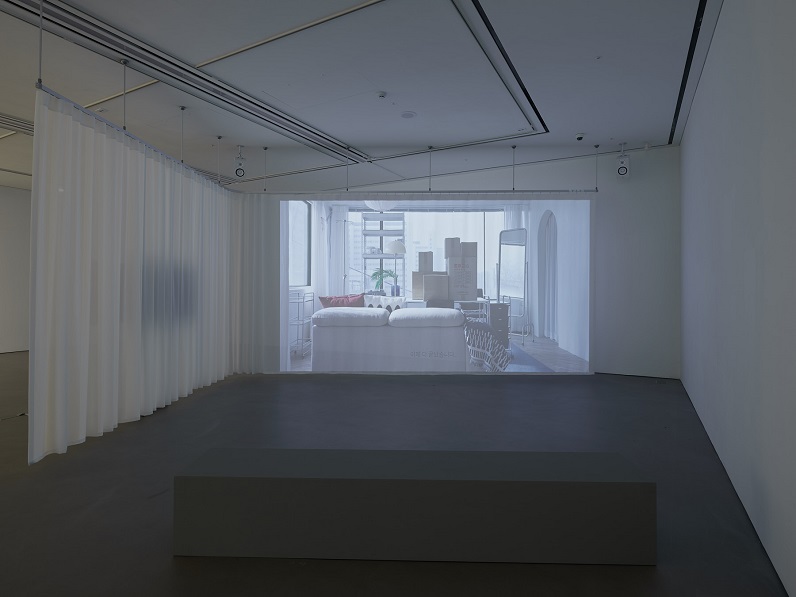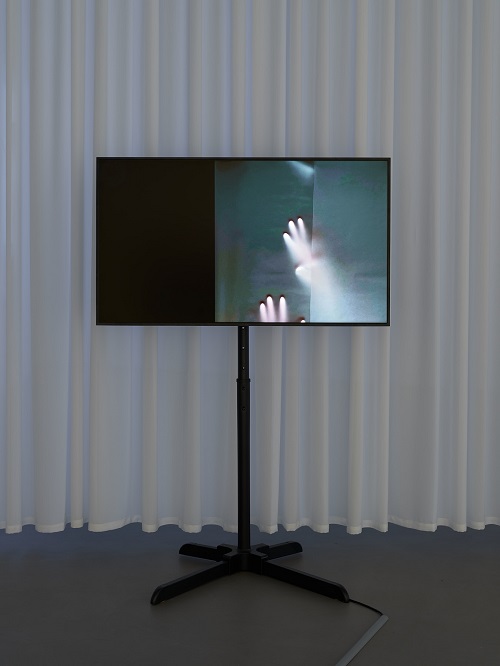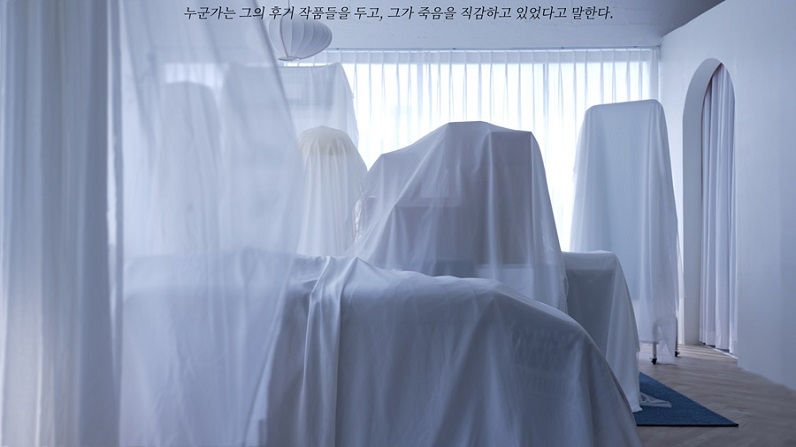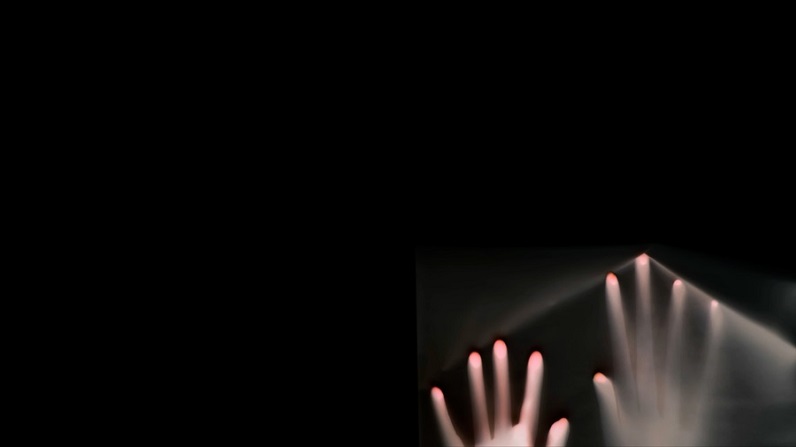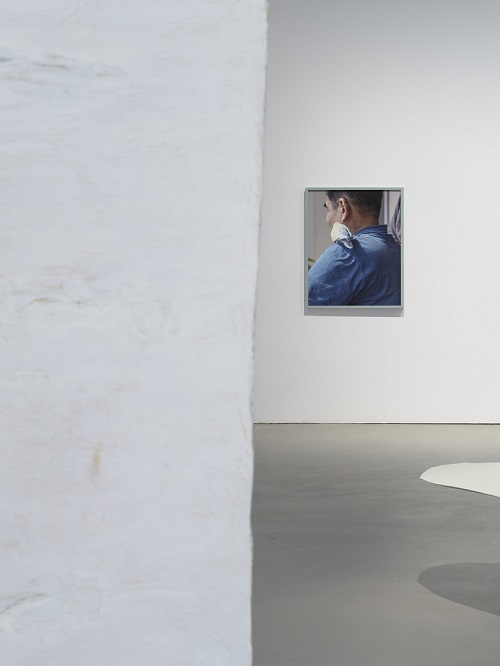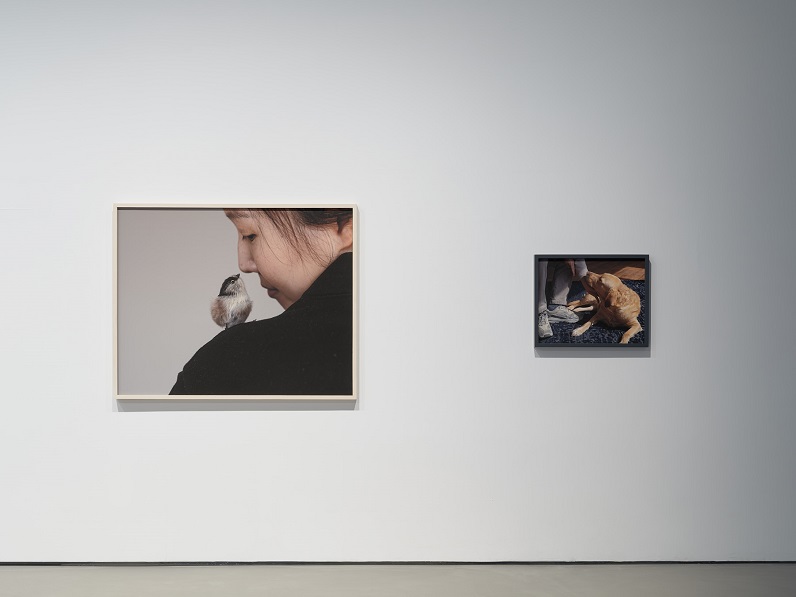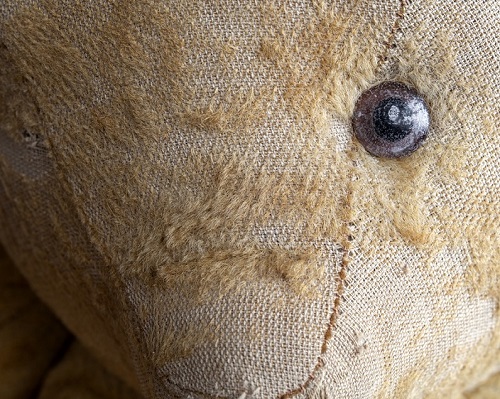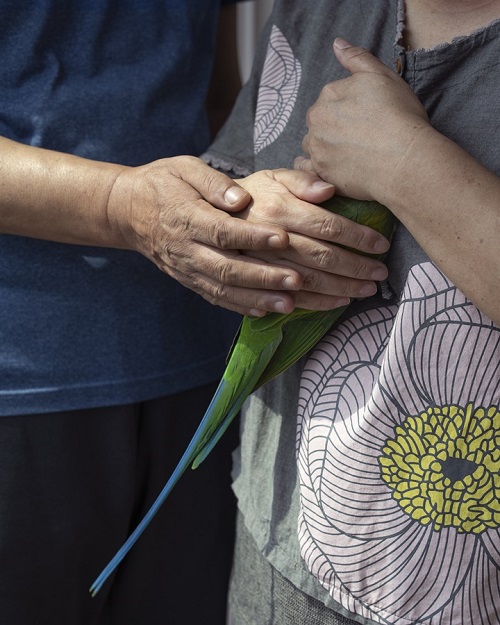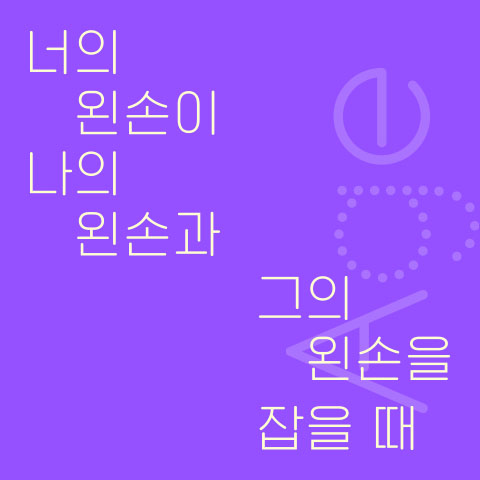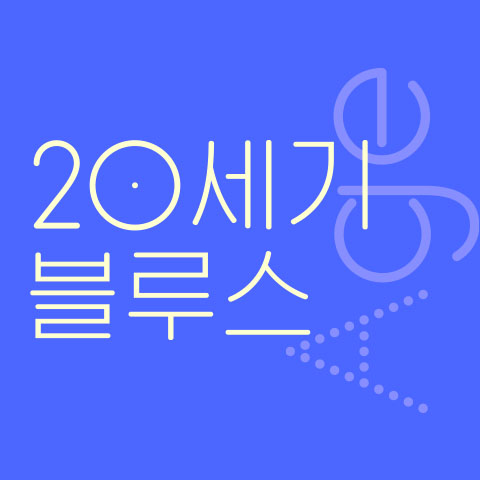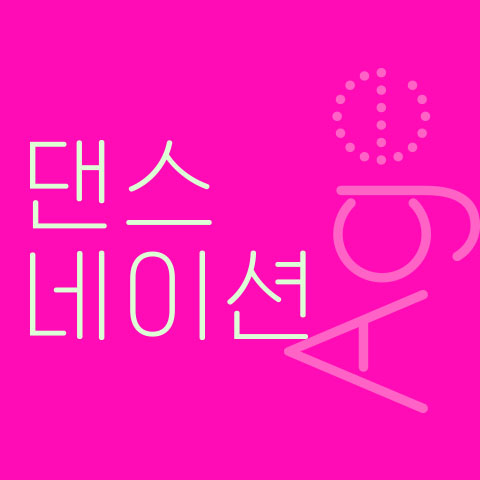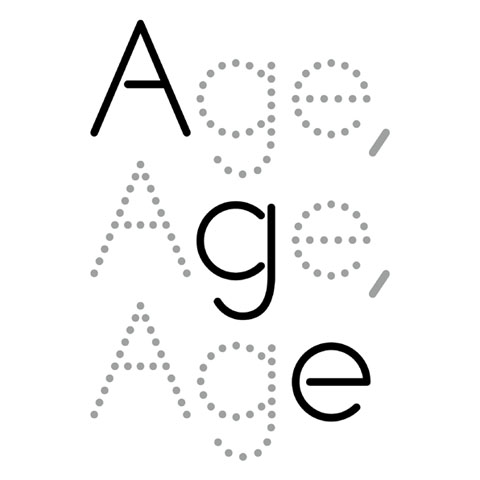- ProgramDOOSAN Humanities Theater
- Artist GuNa Seo Young Chang Eun Chun
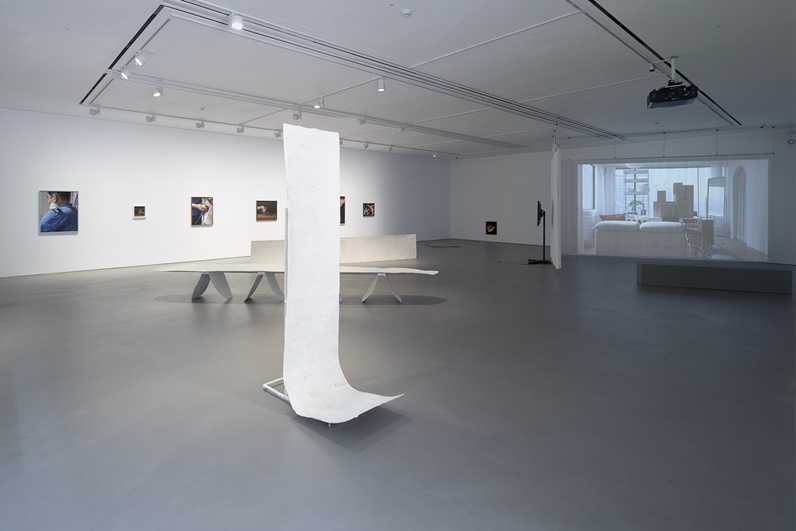
Installation view
Photo by Kyungtae Kim
Tuesday-Saturday 11:00~19:00 / Closed on Sunday and Monday
DOOSAN Gallery: 15, Jongno 33-gil, Jongno-gu, Seoul, Korea
Tel. 02-708-5050
DOOSAN Humanities Theater’s special exhibition, The Sunken Eyes Were Dim reflects upon the universal flow of time that every living being inevitably experiences since birth. The title simultaneously captures a symptom of aging, the gradual decline and loss of bodily functions, and a metaphor for death, a concept that is often distant from our daily lives. Through their works, GuNa, Seo Young Chang, and Eun Chun encourage us to sense and contemplate time, which passes through us every second of every moment.
Openly and frequently discussing age is not just for people who have passed the middle point of their life cycles. Age and the feeling of getting old encroach upon us suddenly but surely, for instance when we reunite with a friend after a long time, witness a child’s rapid growth, or realize that pages in our go-to book have become blurry. The bodily changes that come with passing time are not merely aesthetic but functional as well. They manifest as damage or discomfort in various parts of the body or as different illnesses that threaten our day-to-day lives and, sometimes, even our livelihoods. In today’s world, where machines and AI are taking over many human tasks, aging offers even fewer advantages. In light of this, how should we prepare ourselves for the future—for the certain days to come?
Anthropologist Marc Augé makes valid claims about aging, accepting it as the passage of time by acknowledging that it is unstoppable and that every being with a body continues to renew their time of the present. In Une ethnologie de soi (An ethnology of oneself) (2014), Augé compares time and age to clarify that “age” is a method of explaining the past and also a kind of constraint that recognizes time as unidirectional, while “time” is itself freedom and the source of imagination.* That is to say, once we escape the linear understanding of life—progressing in the order of young, middle-aged, and old—our acceptance of the nature of time and willingness to constantly adapt grant us freedom from age. Such a shift in thinking may, paradoxically, stem from a strong awareness of age. Nonetheless, Augé’s theory—that time does not have an inherent direction—allows us a “subjective” perspective on life, a way to look at our lives from the standpoint of the subject.
GuNa’s sculptures, presented with a multitude of marks, faded colors, and bent or cracked surfaces, embody the passage of time with their whole being. Though their appearance may be rigid as rock, the sculptures’ constantly changing surfaces mirror the delicate nature of human skin. Seo Young Chang’s videos connect the ever-advancing or cyclical nature of time with bodily functions (or their loss) or a character’s physical condition. In the exhibition, the videos are presented on thin creasy fabric instead of walls and partitions and speak about the experience of growing old and faint in a confined space as well as the sense of departure. Eun Chun’s photography captures the mutual relationships between many different living beings who live together, spend time together, and rely on each other, whether it is between a human and another human, different animals and a human, or a plant and an object. Through her lens, she invites us to witness the confluence of a single moment with eternity.
Each artwork, representing old age, defective functionality, and shriveled appearances through different mediums, seemingly points to an inescapable decay of all beings in the face of time. However, the sculptural bodies standing resolutely, the beings in the photos that are vibrantly alive and breathing, and the video scenes of someone escaping a diminishing world into the infinity of outside space all gesture towards life and the possibility of living. Such a perspective will become a pathway through which we can accept time as a neutral force and a sign of possibility instead of a limitation. Through the artworks in The Sunken Eyes Were Dim, DOOSAN Gallery invites viewers to look ahead to their own finish line and wishes them peace as they picture their journeys toward it.
* Marc Augé, Une ethnologie de soi: le temps sans âge, Seuil, 2014
GuNa (b. 1982) graduated from Suwon University majoring in Sculpture and received her M.F.A. in Painting from Hongik University. She has held her solo exhibitions at ARTSPACE BOAN 2 (2022, Seoul, Korea), Park Soo Keun Museum (2020, Yanggu, Korea), KICHE (2019, Seoul, Korea), O'NewWall E'JUHEON (2017, Seoul, Korea) and Place Mak (2012, Seoul, Korea). Also, she has participated in group exhibitions including those held at Faction (2023, Seoul, Korea), Kumho Museum (2021, Seoul, Korea), Onsu Gong-gan (2021, Seoul, Korea), Sempio Space (2020, Icheon, Korea) and Incheon Art Platform (2018, Incheon, Korea), etc.
Seo Young Chang (b. 1983) received her B.F.A. and M.F.A. in Sculpture from Ewha Women’s University and M.A. in Art in Context from Berlin University of the Arts. Chang has held solo exhibitions at Sindoh Art Space (2022, Seoul, Korea), Amado Art Space (2021, Seoul, Korea), DOOSAN Gallery (2019, Seoul, Korea), DOOSAN Gallery New York (2019, New York, U.S.A) and CR Collective (2017, Seoul, Korea), etc. She has also participated in many group exhibitions at various venues including Gallery CNK (2022, Daegu, Korea), d/p (2022, Seoul, Korea), Frieze Film (2022, Seoul, Korea), Gyeonggi Museum of Art (2021, Ansan, Korea) and Museo Archeologico di Atri (2021, Atri, Italy).
Eun Chun (b. 1977) received her B.F.A. in Sculpture from Chung-Ang University and received a Master’s degree in Photography from the Paris 8 University Vincennes-Saint-Denis. She has held her solo exhibitions at Perigee Gallery (2022, Seoul, Korea), GALLERY2 (2020, Seoul, Korea), SeMA Storage; Seoul Museum of Art (2019, Seoul, Korea), BMW Photo Space (2018, Busan, Korea), Amado Art Space (2017, Seoul, Korea) and Old House; CAN Foundation (2014, Seoul, Korea), etc. She also participated in group exhibitions that held at Buk-Seoul Museum of Art (2022, Seoul, Korea), Pibi Gallery (2022, Seoul, Korea), Seoul Art Space Geumcheon (2021, Seoul, Korea), Gyeonggi Museum of Modern Art (2020, Ansan, Korea) and Whistle (2020, Seoul, Korea) among many others.
Curated by Heeseung Choi │ Assisted by Soun Park


